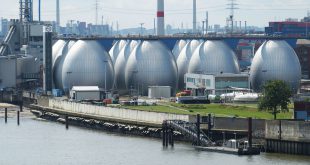The Institut Mines-Télécom Cybersecurity Chair, launched last year on January 25 as part of the dynamic created by the Center of Cyber Excellence, is aimed at contributing to the international development of research activities and training opportunities in an area that has become a national priority: the cybersecurity of critical infrastructures (energy networks, industrial processes, water production plants, financial systems, …
Read More »Search Results for: water
What is a composite material?
Composite materials continue to entice researchers and are increasingly being used in transport structures and buildings. Their qualities are stunning, and they are considered to be indispensable in addressing the environmental challenges at hand: reducing greenhouse gas emissions, creating stronger and more durable building structures, etc. How are these materials designed? What makes them so promising? Sylvain Drapier, a researcher …
Read More »Agro-based composite materials – a Mines area of expertise
The materials of the future need to be more than just high-performance. They must also be environmentally friendly: more recyclable and based on renewable resources. This is why scientists and industrialists are taking a closer look at composite materials developed from plant fibers. They represent a major research focus for Institut Mines-Télécom (IMT) schools — especially at Mines Alès and …
Read More »Vabhyogaz uses our waste to produce hydrogen
Hydrogen is a resource that is prized for its applications in the chemical industry and for its role in the fuel cells used in electric vehicles. Vabhyogaz – a project initiated by Didier Grouset, a researcher at Mines Albi – proposes to convert biogas from our waste into hydrogen. The project, which began nearly ten years ago, is now entering …
Read More »Ingrid Bazin
IMT Mines Alès | #Water #Biosensors
Read More »ALICE sees the origins of the universe in a quark-gluon plasma droplet
ALICE, the Cern experiment in charge of studying the quark-gluon plasma, restarted its main activities on November 17. Based in the Large Hadron Collider (LHC) in Switzerland, ALICE mission is to track each single particle ejected when lead ions collide. Thanks to the “Run 2” upgrade that occurred at the LHC in early 2015, such collisions are now more energetic, …
Read More »Pollution control by constructed wetlands: An expanding French industry
The ability of wetland areas to retain and treat a wide variety of pollutants in urban and rural areas has been known about for a number of years. Understanding how they work has facilitated the creation of biofilters such as constructed wetlands. At Mines Nantes, researcher Florent Chazarenc has studied these systems over lengthy periods and created solutions adapted to …
Read More »Intelligence incarnated, a bio-inspired approach in the field of robotics
Using nature as inspiration is certainly the oldest scientific approach and one that still has much to reveal. Bio-inspired robotics is a research topic at Mines Nantes that uses this process. It does not aim to simply mimic, but actually to understand the tricks nature has found to solve problems. Researcher Frédéric Boyer’s work is driven by such meticulous observation. …
Read More »Marine pollution as seen by ultrafast cameras
Ultrafast cameras unveil processes that are invisible to the naked eye. At Mines Alès, Pierre Slangen, a specialist in applied optics, uses them to build advanced technology devices and thus to understand how gases and liquids are diffused during environmental disasters. Certain physical phenomena occur in such small time scales that they remain practically invisible without the use …
Read More »Recovering uranium without digging: in situ leaching
In light of the increasing economic value of underground resources, and the environmental problems caused by disused mines, research into alternative solutions for extracting raw materials is rapidly increasing. One solution being studied is in situ leaching for recovering uranium. During the Natural Resources and Environment conference that took place November 5-6, 2014 at Institut Mines-Télécom, Vincent Lagneau, a researcher …
Read More » I'MTech L'actualité scientifique et technologique de l'IMT
I'MTech L'actualité scientifique et technologique de l'IMT









